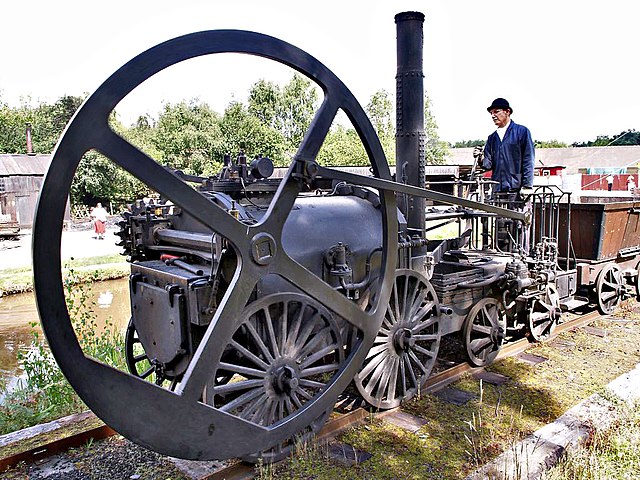A flywheel is a mechanical device which uses the conservation of angular momentum to store rotational energy; a form of kinetic energy proportional to the product of its moment of inertia and the square of its rotational speed. In particular, assuming the flywheel's moment of inertia is constant then the stored (rotational) energy is directly associated with the square of its rotational speed.
Trevithick's 1802 steam locomotive, which used a flywheel to evenly distribute the power of its single cylinder
A mass-produced flywheel
A Landini tractor with exposed flywheel
In physics, angular momentum is the rotational analog of linear momentum. It is an important physical quantity because it is a conserved quantity – the total angular momentum of a closed system remains constant. Angular momentum has both a direction and a magnitude, and both are conserved. Bicycles and motorcycles, flying discs, rifled bullets, and gyroscopes owe their useful properties to conservation of angular momentum. Conservation of angular momentum is also why hurricanes form spirals and neutron stars have high rotational rates. In general, conservation limits the possible motion of a system, but it does not uniquely determine it.
This gyroscope remains upright while spinning owing to the conservation of its angular momentum.
A figure skater in a spin uses conservation of angular momentum – decreasing her moment of inertia by drawing in her arms and legs increases her rotational speed.





